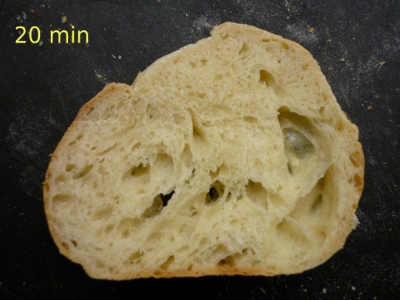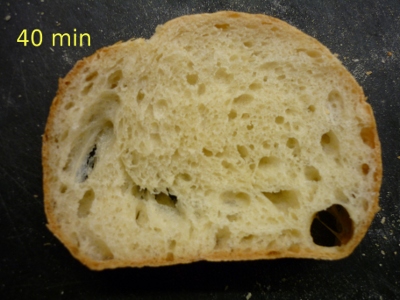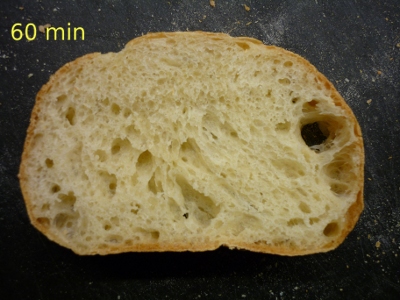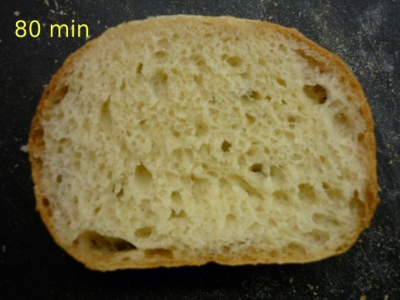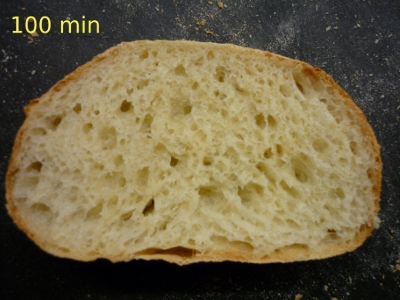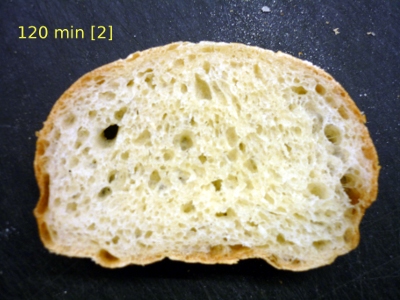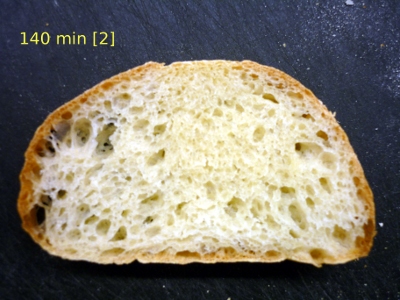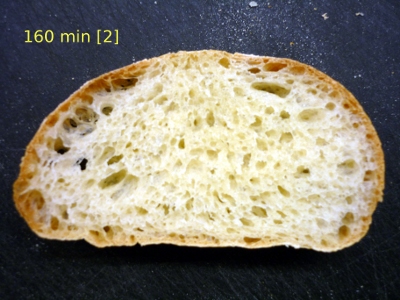Some time ago I had the idea to bake several loaves under exactly the same condition, with one parameter changed, be it flour type, hydration, timing ...
Due to my recent sourdough experiences I found it interesting to bake a series of loaves with different final proof times, to see, taste and document the effects of underproofing and overproofing.
The recipe used is Richard Bertinet's white dough, slightly modified: 100% bread flour, 70% water, 2% salt, 2% fresh yeast (I used 0.7% instant yeast)
I used the slap&fold technique to mix and develop gluten. Bulk proof 1 hour with folding after 15 and 30 min, then shaping into 200g batards and proofing seam-side up in a couche. Baking at 240C for 12 minutes, without steam.
Ambient temperature and dough temperature were 24C to 26C throughout.
I made 2 batches of dough of 1kg each.
The proofing times were in minutes: 20, 40, 60, 80, 100, 120, 140, 160
From the second batch I repeated the 60min and 100min proofs to assert the same behavior.
Here a picture of the baked loaves, I marked the 2nd batch with [2]
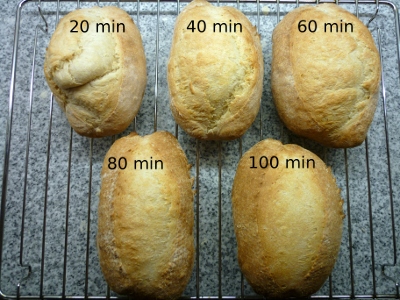
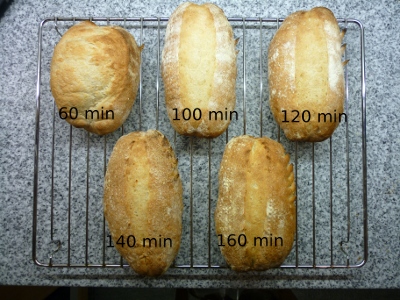
The results:
Oven spring:
The loaf proofed for 20 minutes has a major blowout. The 40min and 60min loaves opened nicely, with a good oven spring. Above 60min proof there is not much oven spring.
Crust:
It is obvious that the longer the proof the more sugars are present
Poke test:
This is difficult to document in a photo, but to my feeling the dough was perfect at about 60 to 70 minutes proof.
Crumb:
Crumbshots are added below. The 20 min loaf has big irregular holes and very dense areas in the crumb. The holes look like torn. Very rubbery and unpleasant to eat. Above 120 min proofing the crumb feels a bit fragile. Otherwise the crumb looks and feels surprisingly similar.
Smell and taste:
Above 100 min proof slightly yeasty. The 20 min proof didn't taste of much. My personal choice for taste would be 80min proof.
Handling:
Above 100min the dough feels very fragile, at 140 min it collapsed when slashing.
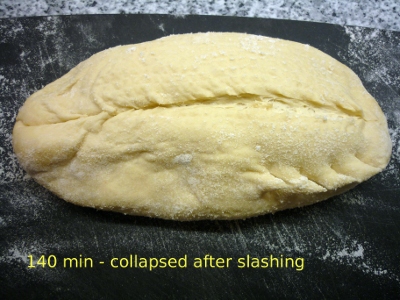
Conclusion:
The loaf at 20min and the loaves above 80min proof showed clear signs of over-and underproofing.
This particular formula seems to be quite forgiving when looking at crumb and taste development.
In my kitchen with those conditions I would probably aim at 70min proof, a matter of personal preference (My wife chose the 60min loaf as her favourite without knowing any of the background)
And here the crumb shots - please excuse the differences in lighting.
